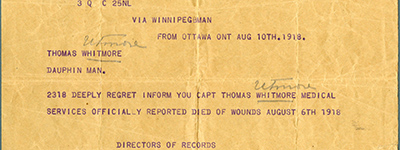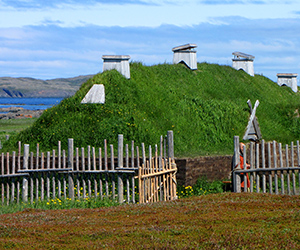CANADA HISTORY - Govenors General
The Duke of Connaught

Prince Arthur, Duke of Connaught and Strathearn, the third son of Queen Victoria, became Canada’s 10th Governor General in 1911, marking the first time a member of the British royal family held the position. His tenure, which lasted until 1916, was shaped by his military background, his long-standing connections to Canada, and the outbreak of World War I. The Duke’s leadership during this period helped guide Canada through the early years of the war, while his family, particularly his daughter, Princess Patricia, became popular figures in Canadian society. This article provides a detailed examination of the Duke of Connaught’s life, his accomplishments, and the significant events and challenges he faced as Governor General.
Early Life and Military Career
Born on May 1, 1850, at Buckingham Palace, Prince Arthur William Patrick Albert was the seventh child and third son of Queen Victoria and Prince Albert. His birth was notable for occurring on the 81st birthday of one of his godfathers, the Duke of Wellington, after whom Arthur was partially named. From a young age, it was clear that Prince Arthur would follow a military path, in line with his destiny as a younger son in a royal family where military service was often expected.
Arthur was educated at the Royal Military College in Woolwich, England, and in 1868, at the age of 18, he was commissioned into the Royal Engineers. His military career would span more than 40 years, and during that time, he served in various capacities and theaters of operation. Early in his career, he saw action in Egypt, where British forces were heavily engaged in operations against the forces of the Mahdist movement. His military skills and leadership abilities were recognized, and by 1893, he had risen to the rank of general.
Throughout his career, Prince Arthur held several important military posts, including Inspector General of the Imperial Forces and Commander-in-Chief of the British forces in the Mediterranean region. His leadership during these appointments, particularly in the area of military training and organization, helped solidify his reputation as a capable and effective officer.
Early Connections to Canada
Long before his appointment as Governor General, Prince Arthur had developed a close connection to Canada. In 1870, he served with the Royal Marines in Montreal and played a minor role in the suppression of the Red River Rebellion, which had been led by Métis leader Louis Riel. Although his involvement in the campaign was brief, it marked the beginning of a long relationship with Canada.
During his time in Montreal, the city named Port Arthur, Ontario, in his honor, a gesture that reflected his rising prominence within the British Empire. In 1890, Prince Arthur traveled across Canada on his return journey from India, further deepening his ties to the country. These experiences gave him a unique understanding of Canada and its people, which would prove valuable when he later assumed the role of Governor General.
Appointment as Governor General
In 1911, Prince Arthur was appointed Governor General of Canada by the British government, a decision that was seen as an important gesture to strengthen ties between Canada and the British Crown. He succeeded Earl Grey, and his appointment was well-received, particularly given his royal lineage and his military credentials. His installation as Governor General took place on October 13, 1911, and he became the first member of the royal family to hold the position.
The Duke’s arrival in Canada was marked by considerable public excitement, particularly in Montreal, where he had served many years earlier. He was accompanied by his wife, Princess Louise Margaret, and his daughter, Princess Patricia, who quickly became one of the most beloved figures in Canadian society. Princess Patricia, known for her charm and beauty, captured the public’s imagination, and she lent her name to the Princess Patricia’s Canadian Light Infantry (PPCLI), a regiment that would go on to achieve fame during World War I.
Early Contributions as Governor General
From the outset of his term, the Duke of Connaught demonstrated a deep interest in Canadian social and economic development. He traveled extensively across the country, visiting every province and engaging with Canadians from all walks of life. His experiences as a military leader and his aristocratic background made him particularly interested in issues related to land development, agriculture, and housing.
One of his most enduring contributions during his time in office was the establishment of the Connaught Cup, a prestigious award presented for excellence in horsemanship at the Montreal Horse Show. The Duke’s interest in equestrian sports, shared by his family, helped promote the sport across Canada and reflected his commitment to fostering Canadian traditions and culture.
World War I: Leadership in Wartime
The defining event of the Duke of Connaught’s term as Governor General was the outbreak of World War I in 1914. As a career soldier with extensive military experience, the Duke was uniquely qualified to provide leadership and support during this difficult time. Although his role as Governor General was largely ceremonial, his military background allowed him to offer valuable insights and encouragement to Canadian military leaders and government officials.
As the war escalated, Canada made significant contributions to the Allied war effort, both in terms of manpower and resources. The Duke of Connaught played a key role in organizing and supporting Canada’s military involvement. One of his first actions was to help organize the Second Canadian Expeditionary Force, which sent thousands of Canadian troops to the Western Front. His personal involvement in the war effort, coupled with his family’s close ties to the British monarchy, helped strengthen the sense of loyalty and duty among Canadians.
Princess Patricia also played an important role during the war, lending her patronage to the creation of the PPCLI. The regiment, which was raised in just 16 days, went on to achieve legendary status for its bravery and accomplishments on the battlefield. Princess Patricia personally designed and presented the regiment’s colors, which bore her initials, “PP.” The “Princess Pats,” as they became known, distinguished themselves in some of the war’s most critical battles, including the Battle of Ypres, where they earned a reputation for their courage and resilience.
The Duke of Connaught was also instrumental in the creation of the Canadian Patriotic Fund, which provided financial support to the families of soldiers who were serving overseas. The fund was a crucial lifeline for many families who were struggling with the economic hardships caused by the war, and the Duke’s support for the initiative further endeared him to Canadians.
Challenges of the War and National Unity
While the Duke of Connaught’s leadership was widely praised, his term as Governor General was not without its challenges. The outbreak of World War I put immense strain on Canada, both economically and socially. The issue of conscription, in particular, threatened to divide the country along linguistic and cultural lines, as French Canadians were strongly opposed to mandatory military service.
Although the Duke was largely a figurehead in this political debate, his role as a representative of the British Crown made him a symbol of the imperial connection, which some Canadians, particularly in Quebec, viewed with suspicion. Nonetheless, the Duke remained steadfast in his commitment to national unity, and he worked to promote a sense of shared purpose among all Canadians, regardless of their background.
Return to England and Later Life
The Duke of Connaught’s term as Governor General ended in 1916, and he returned to England to resume his military duties. Upon his return, he continued to fulfill royal functions and served in various ceremonial roles until his death in 1942. Despite his relatively short time in Canada, the Duke left a lasting legacy, particularly through his support of the war effort and his promotion of Canadian military and social institutions.
His death on January 16, 1942, at the age of 91 marked the end of a long and distinguished life of service to the British Empire. He was succeeded by his grandson, Alastair, the Earl of MacDuff.
Legacy
The Duke of Connaught’s legacy in Canada is largely defined by his leadership during World War I and his efforts to support Canada’s military and social institutions during one of the most challenging periods in the country’s history. His military background and royal lineage gave him a unique status as Governor General, and his personal involvement in Canada’s war effort helped to solidify the nation’s commitment to the Allied cause.
The Duke’s promotion of national unity, his support for the Canadian Patriotic Fund, and his role in organizing the Second Expeditionary Force demonstrated his dedication to the well-being of Canadians during wartime. His daughter, Princess Patricia, also left a lasting mark through her patronage of the PPCLI, a regiment that continues to be one of Canada’s most celebrated military units.
In the decades since his term as Governor General, the Duke of Connaught’s contributions have been recognized as part of Canada’s larger history of loyalty to the British Crown and its role in World War I. His leadership, though largely symbolic, helped to guide Canada through a period of crisis and transformation, and his name remains associated with many of the institutions he helped to foster during his time in office.
Cite Article : Reference: www.canadahistory.com/sections/documents/documents.html
Source: NA



